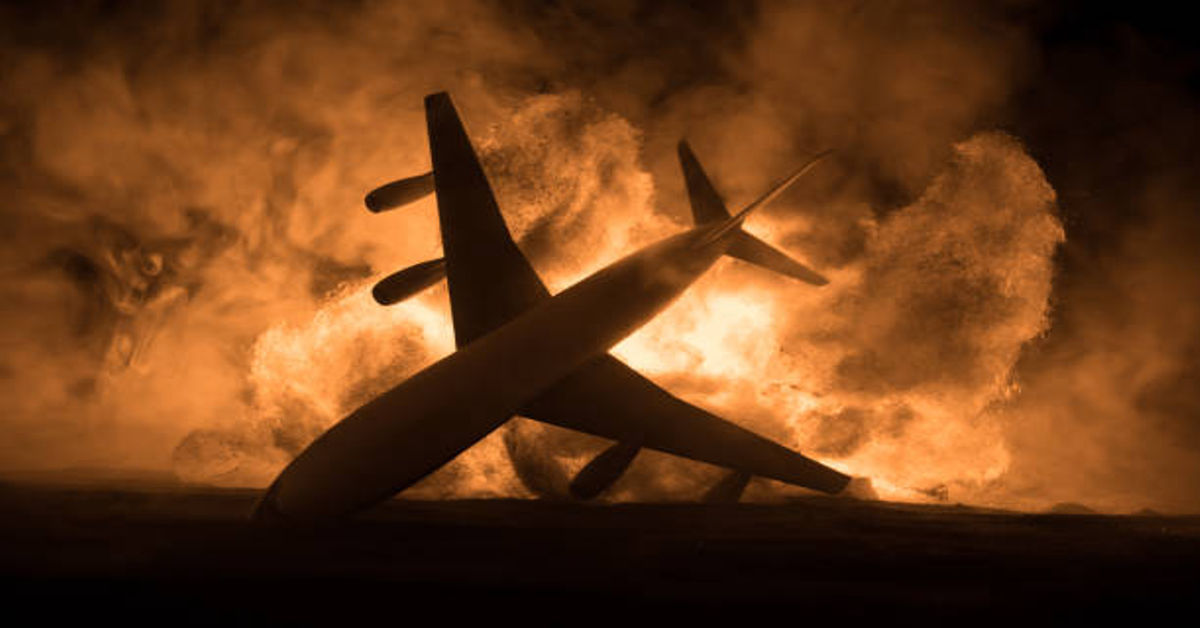Air travel is widely considered one of the safest modes of transportation, yet airplane crashes, though rare, capture significant attention due to their catastrophic nature and human consequences. Understanding airplane crashes requires examining the factors that contribute to aviation accidents, the physics behind crashes, the evolution of aircraft safety, and the steps airlines, regulators, and engineers take to minimize risks. These accidents are not merely random events; they are often the culmination of multiple failures—technical, human, or environmental. Learning from past incidents has allowed the aviation industry to dramatically improve safety standards, making modern air travel statistically safer than traveling by car, train, or even walking in certain regions.
Airplane crashes can occur for various reasons, ranging from mechanical failures to weather hazards, pilot error, and unexpected emergencies. Each crash typically triggers thorough investigations by national and international aviation authorities, including the National Transportation Safety Board (NTSB) in the United States and the International Civil Aviation Organization (ICAO). These investigations not only determine the root causes of an accident but also lead to regulatory changes, updated training protocols, and engineering improvements that prevent future incidents.
Causes of Airplane Crashes
While the term “airplane crash” can encompass a wide variety of incidents, most aviation experts categorize the causes into several main groups: human error, mechanical failure, weather-related hazards, sabotage or terrorism, and other external factors.
1. Human Error
Human error remains the leading cause of aviation accidents worldwide. Pilots, air traffic controllers, maintenance staff, or operational personnel may make mistakes under high-stress conditions. Common examples include misinterpreting instruments, failing to follow safety procedures, or incorrectly managing fuel or flight paths. Human error accounts for roughly 50–60% of all aviation incidents, but modern cockpit automation and rigorous training have greatly reduced its impact over the years.
2. Mechanical and Technical Failures
Mechanical failure occurs when aircraft components, engines, or systems malfunction, preventing safe operation. While commercial aircraft are designed with multiple redundancies, some failures can still lead to accidents if not addressed promptly. Examples include engine failures, hydraulic malfunctions, landing gear issues, and structural weaknesses. Regular maintenance, pre-flight checks, and strict adherence to inspection schedules minimize the risk of mechanical failure.
3. Weather-Related Hazards
Weather plays a significant role in aviation safety. Severe storms, lightning strikes, icing, turbulence, and wind shear can compromise flight safety. While pilots receive real-time weather updates and instruments to navigate adverse conditions, sudden weather changes or misjudgment can result in accidents. Advanced forecasting and onboard detection systems have reduced weather-related crashes significantly in recent decades.
4. Sabotage or Terrorism
Although rare, deliberate acts such as bombings, hijackings, or sabotage have caused major airplane crashes in history. Aviation security measures—including baggage screening, passenger vetting, reinforced cockpit doors, and onboard surveillance—have drastically reduced such risks.
5. Other External Factors
Other factors include bird strikes, runway collisions, wildlife interference, or foreign object damage. Each of these can trigger emergencies that, if not managed correctly, lead to accidents. For example, bird strikes on jet engines during takeoff or landing can be catastrophic if proper engine inspection protocols are not in place.
Table: Common Causes of Airplane Crashes and Their Frequency
| Cause Type | Approximate Frequency | Description |
|---|---|---|
| Human Error | 50–60% | Pilot mistakes, miscommunication, operational errors |
| Mechanical/Technical | 15–20% | Engine failure, hydraulic issues, structural problems |
| Weather-Related | 10–15% | Storms, wind shear, turbulence, icing |
| Sabotage/Terrorism | <5% | Hijacking, bombs, deliberate sabotage |
| Other External Factors | 5–10% | Bird strikes, runway collisions, foreign objects |
Phases of Flight and Accident Risk
Airplane crashes can happen at any stage of a flight, but certain phases are statistically more vulnerable. Studies show that takeoff and landing carry the highest risk due to the concentration of maneuvers, low altitude, and reliance on precise timing. Cruise flight, which represents the majority of flight time, is statistically the safest phase due to autopilot systems, redundancy, and minimal operational interference.
- Takeoff: Pilots manage thrust, lift, and initial climb. Engine failure, runway obstacles, or wind gusts can pose immediate threats.
- Climb and Cruise: Aircraft systems are monitored, autopilot manages flight path. Failures are less likely but still possible.
- Descent and Landing: Approach to airports requires precise navigation. Weather, miscommunication with air traffic control, or mechanical problems may result in accidents.
Physics of an Airplane Crash
Understanding the physics behind airplane crashes is essential for engineers, safety investigators, and designers. Crashes involve kinetic energy, momentum, structural integrity, and impact forces. The severity of a crash depends on speed, angle of impact, aircraft mass, and terrain. Modern aircraft are designed with crumple zones, reinforced fuselage sections, and energy-absorbing seats to reduce injury during crashes. Flight recorders, known as black boxes, provide critical data on speed, altitude, engine performance, and cockpit communications, allowing investigators to reconstruct crash events.
Survivability Factors
While airplane crashes are dramatic, survival rates are higher than commonly perceived, especially in non-catastrophic accidents. Factors affecting survivability include:
- Crash type: Controlled emergency landings or runway overruns often have higher survival rates than high-speed collisions.
- Seat location: Studies suggest seats near the rear of the aircraft can have slightly higher survival chances in certain accidents.
- Passenger preparedness: Knowledge of safety instructions, brace positions, and proper use of oxygen masks and life vests increases survivability.
- Emergency response: Prompt access to emergency services, evacuation slides, and trained crew improves outcomes.
Table: Airplane Crash Survivability Factors
| Factor | Effect on Survival |
|---|---|
| Crash Type | Emergency landing > high-speed collision |
| Seat Location | Rear seats sometimes safer |
| Safety Compliance | Following instructions improves outcomes |
| Crew Response | Efficient evacuation increases survival |
| Structural Safety | Reinforced fuselage reduces injuries |
Investigating Airplane Crashes
Airplane crashes are subject to detailed investigations to determine root causes and prevent recurrence. The investigative process includes:
- Securing the site: Authorities cordon off the area to protect evidence.
- Recovering black boxes: Flight Data Recorders and Cockpit Voice Recorders provide key insights.
- Analyzing wreckage: Structural and mechanical failures are examined.
- Interviewing witnesses: Crew, passengers, and air traffic controllers provide context.
- Publishing findings: Recommendations for safety improvements are issued to regulators, airlines, and manufacturers.
These investigations often lead to new safety regulations, improved aircraft design, and updated pilot training protocols.
Safety Improvements in Aviation
Thanks to decades of research and lessons learned from past crashes, aviation is one of the safest transportation modes. Key improvements include:
- Enhanced cockpit automation: Reduces pilot workload and human error.
- Advanced navigation systems: GPS, radar, and collision avoidance systems improve situational awareness.
- Improved aircraft design: Reinforced fuselage, better crashworthiness, and fire-resistant materials.
- Crew training and simulations: Pilots practice emergency scenarios in simulators regularly.
- Global safety standards: ICAO, FAA, and EASA enforce strict safety and maintenance requirements.
Impact of Airplane Crashes
Airplane crashes affect multiple levels:
- Human: Loss of life, injuries, and psychological trauma.
- Economic: Airlines face legal liabilities, insurance claims, and revenue loss.
- Regulatory: Accidents often prompt new aviation regulations.
- Technological: Lead to innovation in aircraft design, safety systems, and training methods.
Despite their rarity, crashes have lasting effects on aviation policy and public perception.
Table: Notable Airplane Crash Lessons Learned
| Crash Event | Year | Key Lesson Learned |
|---|---|---|
| Tenerife Airport Disaster | 1977 | Importance of communication and runway safety |
| Air France Flight 447 | 2009 | Icing sensors and automated pilot response |
| US Airways Flight 1549 | 2009 | Engine-out emergency landing training |
| Japan Airlines Flight 123 | 1985 | Structural fatigue and inspection protocols |
| Asiana Airlines Flight 214 | 2013 | Importance of approach speed and pilot monitoring |
Preventing Airplane Crashes
Prevention combines technology, human training, and regulatory oversight:
- Regular Maintenance: Ensures mechanical reliability.
- Pilot Training: Simulations, emergency drills, and continual certification.
- Air Traffic Control: Prevents collisions and manages airspace.
- Weather Monitoring: Advanced forecasting reduces risk from storms and turbulence.
- Passenger Awareness: Proper use of seat belts, life vests, and oxygen masks.
Airlines, manufacturers, and aviation authorities work together globally to maintain continuous improvement in safety.
Future of Aviation Safety
The future focuses on automation, AI, and enhanced design:
- Autonomous flight systems: Reduce human error.
- Predictive maintenance: Sensors alert to potential mechanical failures before accidents.
- Enhanced material science: Lighter, stronger fuselage materials improve crash survivability.
- Virtual reality training: Immersive simulations for pilots and crew.
- Global cooperation: Sharing data and best practices across nations to minimize risks.
Conclusion
An airplane crash, though dramatic and widely feared, is extremely rare due to rigorous aviation standards, technology, and human training. Understanding the causes—whether human error, mechanical failure, weather hazards, or other external factors—helps highlight why modern air travel remains one of the safest modes of transportation. Investigations of past crashes have led to improved aircraft design, stricter regulations, and enhanced pilot training, making the skies safer than ever. Learning from past accidents, respecting safety protocols, and choosing reputable airlines ensure passengers can travel with confidence while minimizing risk. Aviation safety continues to evolve, incorporating new technology and global best practices to reduce airplane crashes and save lives.
FAQs
1. What usually causes an airplane crash?
Most airplane crashes result from a combination of human error, mechanical failure, or extreme weather conditions.
2. Are airplane crashes common?
No, they are extremely rare. Modern aviation is statistically safer than cars or trains.
3. Can passengers survive airplane crashes?
Yes. Survival depends on crash type, seat location, safety compliance, and crew response.
4. How do authorities investigate airplane crashes?
Investigations involve black boxes, wreckage analysis, interviews, and regulatory recommendations for safety improvements.
5. How has aviation safety improved over the years?
Through better aircraft design, pilot training, automation, air traffic management, and strict global regulations.









